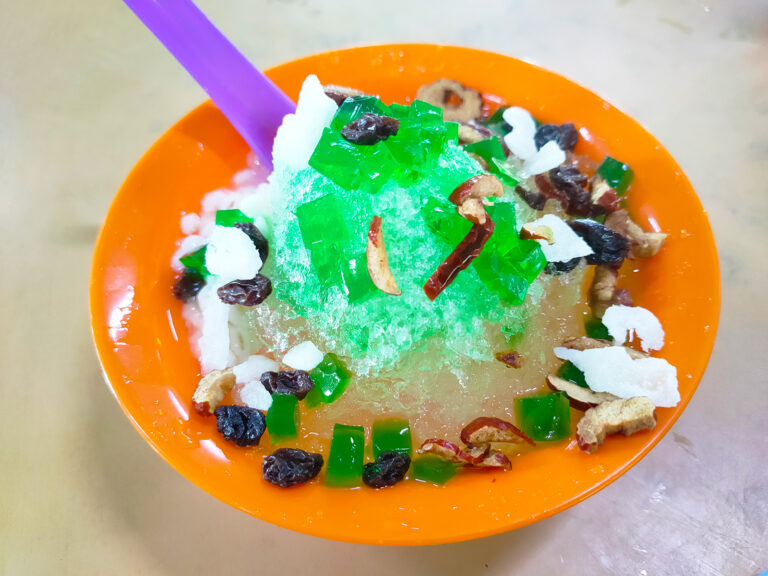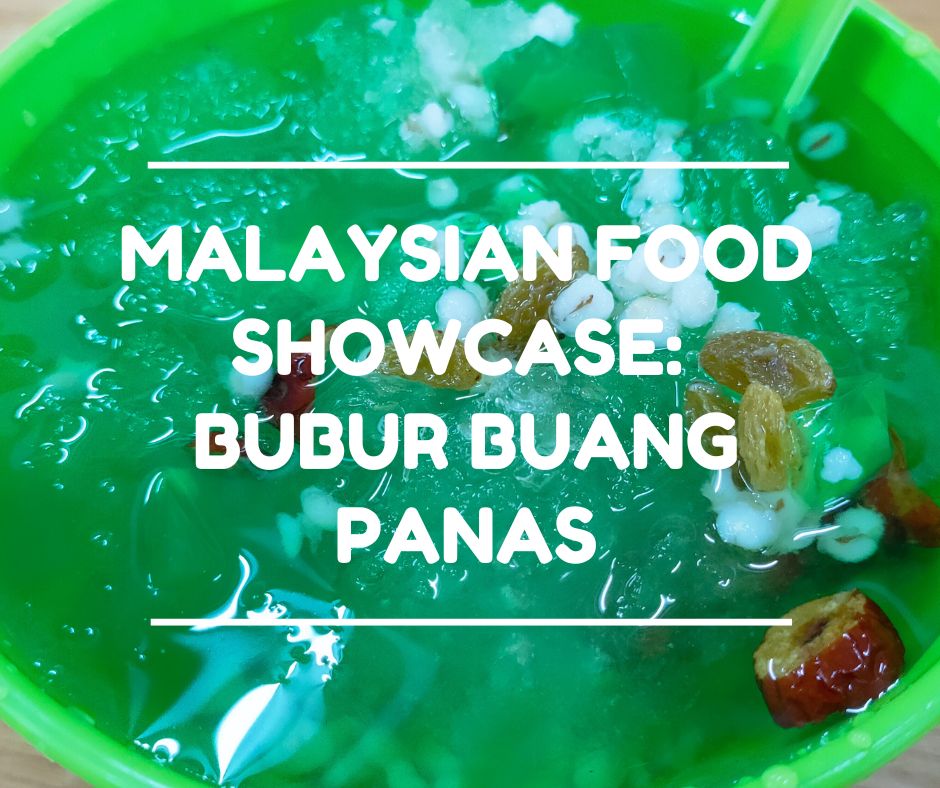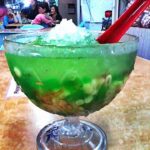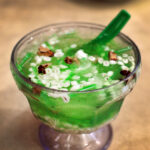Bubur Buang Panas: The Iconic Icy Dessert of Sibu
If you wander through the hawker centers of Sibu and come across a signboard that reads Bubur Buang Panas (五味汤), don’t expect a steaming bowl of rice porridge. Its name literally means “heat-expelling porridge” in Malay, because this dish is a refreshing, chilled dessert beloved by Sarawakians. Known more traditionally in Chinese as 五味汤 (meaning ‘Five Flavours Soup’) or in Hokkien as Gor Bee Th’ng, this dessert often includes red dates, dried longan, pearl barley, candied wintermelon, raisins and green jellies. Some versions include dried persimmons, or even more exotic items like peach gum, hawthorn slices, and sweet corn.
While today Sarawakians might identify it most strongly with Sibu, the origin of Bubur Buang Panas (五味汤) is said to trace back to Kuching in 1946. Back then, it was common for food stall owners to supplement their income by creating more items for their menu. One Kuchingite stall owner created a different version of 清补凉 (Qing Bu Liang) using various commonly found Chinese ingredients like red dates, dried persimmons, dried longan etc. and created one that was light, cooling, and nutritionally balancing, and called it Five Flavour Soup in Chinese.
But over the decades, as Kuching’s dessert scene diversified with dishes like White Lady and Ice Kacang, Bubur Buang Panas slowly faded into the backdrop. Meanwhile, Sibu food stall owners picked up the torch in the 60s and ran with it hard, which is why you are far more likely to find this dessert in Sibu today than anywhere else in Sarawak.
Also here’s where things get linguistically tangled. In Kuching, this dessert is not usually called Bubur Buang Panas, it is more commonly translated as Laici Kang. The reason why it is called Laici Kang is yet another long story. In short, Laici Kang is derived from “lianzi geng” (莲子羹), meaning lotus seed soup. Over time, mishearings and creative substitutions led to its rebranding, some with actual lychees (laici in Malay), basil seeds, lo han guo, and even ginkgo nuts etc. added into the mix. So if you ever see Laici Kang/Linchee Kang (or any other variations of spellings) in other parts of Malaysia, be prepared to receive a completely different dessert.
Meanwhile, back in Sibu, the community has held firm. This isn’t Laici Kang. It is consistently and distinctly Bubur Buang Panas. Sibu locals see it as a true representative of their food culture, not a regional copy or offshoot. That clarity and consistency are part of why the name, strange as it may sound, has stuck. Vendors in Sibu have also stuck to a more consistent look and taste.
When served, it’s either ladled into a bowl or poured into a cup, complete with shaved ice. The flavour profile is gently sweet, slightly herbaceous, and extremely cooling, a gentle counter against Sarawak’s sweltering sun.
Want to try it for yourself? Head to Sibu’s central markets or any hawker stalls, especially those near old town areas. Some family-run businesses still operate with recipes dating back to the 60s and 70s. During hot season or after a heavy meal, it’s the perfect palate cleanser and body cooler. Just make sure you don’t walk in expecting rice porridge.





